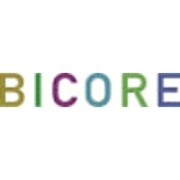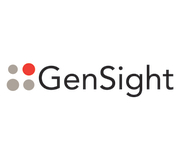Project Portfolio Management (PPM) encompasses processes and tools that help an organization manage its projects to align with strategic objectives, prioritize resources, and ensure effective execution.
PPM tools support businesses in evaluating potential projects and tracking ongoing project performance. They enable decision-makers to allocate resources effectively, ensuring alignment with corporate goals. By providing a centralized view, PPM systems streamline project selection, planning, and execution, facilitating successful outcomes.
What are the critical features of PPM solutions?In industries like healthcare, PPM solutions are used to manage complex projects such as hospital expansions, technology implementations, and regulatory compliance. In finance, they support planning and execution of strategic initiatives, tracking project progress, and ensuring budget adherence.
For organizations, Project Portfolio Management is helpful in systematically handling multiple projects, optimizing resource use, and aligning projects with strategic goals for improved business outcomes.















































In most cases, yes, PPM is a software. The best PPM solutions are software or even SaaS in today's fast-growing, ever-changing marketplace. In fact, many solutions are even moving toward more cloud-based options, as that is what the industry is demanding.
Project management commonly involves the general daily tasks concerning project planning, such as status, surveillance, inquiry, etc. The focus is on immediate goals and priorities: what activities are to be completed today, by whom, etc. These tools are available to help teams clarify daily goals, maintain budgets and timekeeping, and celebrate daily accomplishments and successes.
Project portfolio management is created for long-term far-reaching projects, processes, or product development. A worthwhile PPM will assist enterprise organizations in better understanding how a planned project, process, or new product development may affect the overall organization's performance and impact current resources. The PPM will show a comprehensive perspective of each and every project or process and how the new anticipated project or process may affect the relationships and dependencies between the processes throughout the entire enterprise. Managers, clients, and all stakeholders will have access to the PPM perspective, which will ensure all parties involved are aware of the anticipated success or potential challenges an enterprise may experience and provide direction for course correction.
PPM tools provide direction for an organization to ensure the success of an anticipated project or process. PPM tools provide insight and facilitate the establishment of realistic long-term goals, planning processes, and strategic perspectives. Using the goals and guidelines set forth by a PPM tool, organizations can avoid unnecessary predictable disasters, prevent significant financial loss, save money, and maintain the highest levels of productivity and profitability.
Implementing Project Portfolio Management solutions in your organization can streamline project selection, prioritize resource allocation, and improve project success rates. By having a centralized platform, you gain visibility into all ongoing projects, enabling better decision-making. This leads to cost savings, reduced project delivery times, and increased alignment with business goals.
How do Project Portfolio Management solutions support risk management?Project Portfolio Management solutions offer tools to identify, assess, and mitigate risks across projects. You can evaluate risk factors, apply scenarios, and prepare contingency plans. The solutions provide alerts and dashboards that keep you informed of potential issues, allowing proactive risk management and minimizing negative impacts on project outcomes.
Can Project Portfolio Management solutions integrate with other enterprise systems?Yes, modern Project Portfolio Management solutions are designed to integrate seamlessly with enterprise systems such as ERP, CRM, and HR software. This integration facilitates data sharing across platforms, eliminates data silos, and ensures all stakeholders access consistent and up-to-date information, enhancing collaboration and efficiency across your organization.
What factors should be considered when choosing a Project Portfolio Management solution?When selecting a Project Portfolio Management solution, consider factors like ease of use, customization capabilities, and scalability. Ensure it offers robust reporting features and real-time data access. Vendor support, cost-effectiveness, and integration capabilities with existing tools also play crucial roles in choosing the right solution for your organizational needs.
How can Project Portfolio Management solutions enhance strategic alignment?Project Portfolio Management solutions help align projects with your organization's strategic goals by providing tools to assess the value and impact of projects. You can prioritize initiatives that contribute most to your objectives, ensuring resources are directed toward projects that drive growth and competitive advantage. They enable continuous monitoring to keep projects aligned with evolving business strategies.